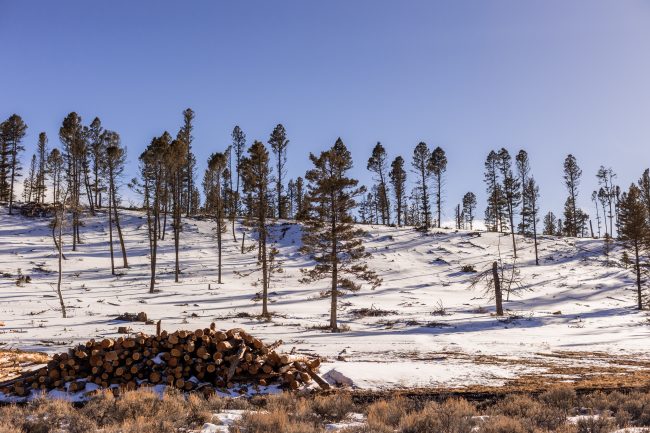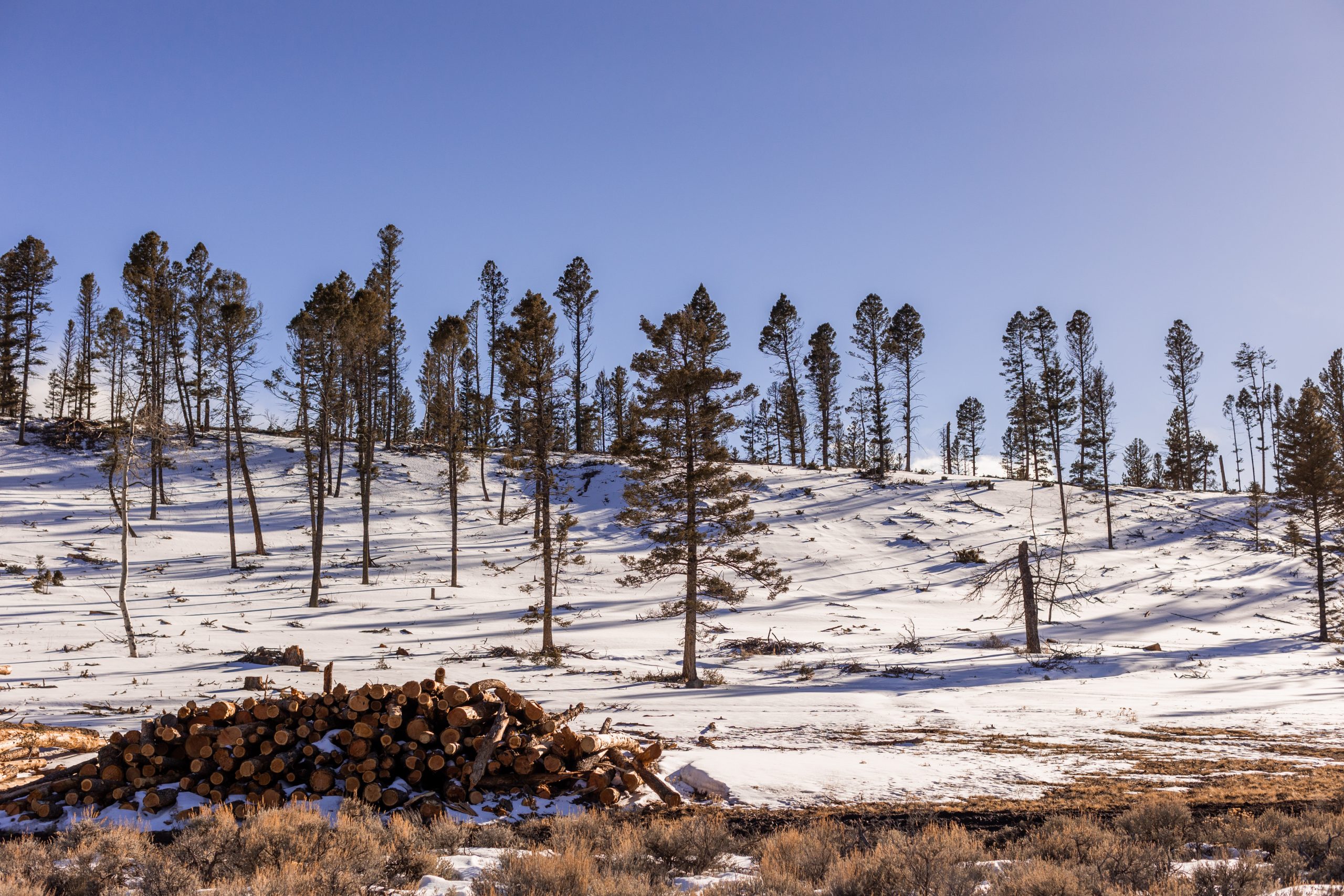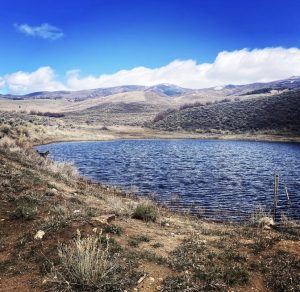A NUMBER OF “wildfire risk reduction” projects are proposed or already underway across tens of millions of acres of national forests in the western U.S., including Pike and San Isabel and 3.5 million acres of the Front Range in Colorado.1 The 2021 Infrastructure bill allocated over $3 billion — with Colorado’s U.S. Sen. Michael Bennet, Sen. John Hickenlooper and Rep. Jason Crow seeking another $60 billion — to the U.S. Forest Service in the hopes of “reducing exposure of people, communities and natural resources to the risk of catastrophic wildfire.”2 Add an Emergency Action that expedites the removal of “hazardous fuels” while skirting legal challenges from conservationists, and our public forests may be seeing more activity than they have in several decades.3
Before we move forward with these plans, perhaps it’s worth one last look at the science behind how this forest management intends to protect our homes, communities and lives from wildfires.
A Century of Fire Suppression
The forest products industry, the U.S. Forest Service and Bureau of Land Management (along with state, county and municipal agencies), elected officials on both sides of the political aisle and most media outlets say that almost a hundred years of fire suppression (mostly by the Forest Service) have led to “overgrown,” “unhealthy” forests that threaten communities in what’s known as the wildland-urban interface. For many Americans, this view that something’s wrong with the woods that can only be fixed by human intervention just feels right. After all, since forests are what do the burning, surely fewer trees means fewer fires, right?
So, let’s start with the idea that today’s wildfires are bigger and more severe than they’ve ever been before. Over the last three years, Colorado has experienced three of its largest and most destructive wildfires in a century, each determined or suspected to have been human-caused: 2020’s Cameron Peak Fire in Roosevelt National Forest (208,663 acres, 461 structures destroyed); 2020’s East Troublesome Fire in Arapaho National Forest (192,560 acres, ~400 structures destroyed, 2 lives lost) and 2021’s Marshall Fire in Boulder County grasslands and residential neighborhoods (1,600 acres, 1,084 structures destroyed, 2 lives lost).4
But if we go back to early 20th- and 19th-century records of Western forests prior to fire suppression, we find that large, severe wildfires not only weren’t rare, they were the norm. One study concluded that in Colorado’s conifer forests above 6,000 feet “fire severities prior to any fire exclusion effects was sufficient to kill high percentages of mature trees.” Even at lower-elevation stands in the Front Range, “81% showed mixed- and high-severity fire effects, rather than low-severity effects, prior to fire suppression.”5 Indeed, these same findings of large, hot wildfires before fire suppression are replicated in California, Oregon, Montana, Idaho, Wyoming, South Dakota and Arizona.
The Skinny on “Thinning”
Even if we can’t blame fire suppression, it doesn’t change the fact that wildfires are still burning near forest-edge communities populated by millions of people. Isn’t it still worth cutting trees? Yet in a 2020 letter to Congress, 200 of the nation’s scientists, citing recent studies, wrote, “Reduced forest protections and increased logging tend to make wildland fires burn more intensely.”6 “Uncut stands suffered the least damage from wildfire,” determined another comprehensive study, finding that forests actually burned hotter after logging.7 Or, as an additional peer-reviewed study put it, “forests with the highest levels of protection from logging tend to burn least severely.”8

Fair enough, but how about all those standing dead trees killed by beetles and wildfire? Surely, we can agree they’re major hazards that need to be cut and hauled out of the woods. Except, once again, the conventional wisdom is upended by the science. Or, as one Colorado study concluded (along with dozens of others), “beetle infestation did not alter fire severity.”9
Some might object that “fire risk reduction” isn’t about logging but “thinning,” as in only removing a few small trees here and there when absolutely necessary.
First, the euphemism “thinning” is frequently used to justify clear-cutting and logging mature and old-growth trees. Right now, Jefferson County Open Space in the Front Range is clear-cutting hundreds of acres of forest along popular trails, including mature trees — e.g., 129 years old.10 Second, in cases when the “forest treatment” truly is “thinning,” the science is finding these treatments ineffective at stopping the spread of wildfire to communities. For instance, a Forest Service study of Colorado’s 2002 Hayman Fire north of Colorado Springs — the largest in almost a century prior to 2020 — found that “fuel breaks and treatments were breached by massive spotting and intense surface fires.… Extreme environmental conditions … overwhelmed most fuel treatment effects.… Suppression efforts had little benefit from fuel modifications.”11 Another Forest Service study discovered that, during 2012’s Fourmile Canyon Fire outside Boulder, thinned forests “burned more severely than neighboring areas where the fuels were not treated.”12
Now, wait a second. How could it be possible that tree removal not only doesn’t slow wildfires but can actually make them worse? A 2021 study summed it up pretty well. Thinning “can lead to increased surface wind speed and fuel heating, which allows for increased rates of fire spread in thinned forests.” Even thinning followed by prescribed fire “may increase the risk of fire by increasing sunlight exposure to the forest floor, drying vegetation, promoting understory growth and increasing wind speeds.”13
Climate-driven Wildfire
Accepting that logging can make wildfire severity and spread worse, surely we can’t blame past management for all the recent large wildfires. What are the factors that all of Colorado’s biggest burns have had in common? High temperatures, drought and wind. The large, hot fires are all about weather. And the word for long-term weather trends is “climate.” What’s one of our best buffers against climate change? Areas that are storing and sequestering mind-boggling quantities of carbon in living and dead trees, roots and soil … forests! Yet somehow, industry and partnering agencies insist that the best way to deal with climate-driven wildfire is to cut more trees, releasing even more carbon dioxide into the atmosphere.
Indeed, logging is one of the nation’s (the world’s) largest drivers of climate change, putting out 10 times more carbon than fire and native insects combined. Plus, unlike logging, which removes trees from the forest, wildfire is an essential process that cycles nutrients back into the soil and rejuvenates new growth.14
No Place Like Home
Forests aren’t overgrown, logging isn’t a fire fix and climate is the main driver. But such realities don’t erase the fact that these blazes can still be a threat to forest-edge communities. Is there nothing we can do to protect homes and lives? For starters, as long as people insist on living in the forest — pushing the wildland-urban interface further and further into the wild — homes are going to be at risk. To truly address the issue, we’d have to discourage building in “fire-sheds” as strictly as we do in floodplains. Of course, that’s not likely to be politically popular anytime soon. Besides, if it were, we’d still need to do something about the homes already there.
Turns out the U.S. Forest Service has known how to protect communities from wildfire for decades. Indeed, studies from its very own Rocky Mountain Research Station’s Fire Sciences Laboratory found that simple measures such as replacing wooden roofs with metal ones and maintaining defensible space immediately around a home — recent studies find 15-60 feet to be most effective — can protect up to 95% of homes from the most “catastrophic” wildfires. 15 16
While there is near-consensus that hardening homes, or making them “Firewise,” is the single most effective way of adapting to wildfire, why have so few actually been treated? Because nearly all of the attention — and funding — is focused on “wildfire risk reduction” logging in our public forests.
Down the Pike
Curious what these “fire risk reduction” projects look like on the ground? As it turns out, two are about to be launched in the Pike and San Isabel national forests. First, The Twin Lakes Vegetation Management Project is 4,253 acres of logging in the watershed of the Twin Lakes Reservoir — drinking water for Colorado Springs and Aurora — in Chaffee and Lake counties.17 This project includes 2,171 acres of logging inside two Inventoried Roadless Areas, with the usual “prohibition on tree cutting, sale, or removal” waived under the guise of a wildfire “emergency.”18 What this will look like is logging aspen stands, 25% of which will be clearcuts up to 40 acres; logging lodgepole pine, with 25% clearcuts; “thinning” ponderosa pine stands, with 20% clearcuts up to 1 acre; “thinning” spruce-fir stands, with 25% clearcuts up to 2 acres; additional clearcuts up to 40 acres along ridgelines and roads; and removing all trees killed during a previous prescribed burn. Meanwhile, only 10% of trees will be in protected “reserves.”
Second, the “East-Central Wet Mountains Hazardous Fuel Reduction and Forest Restoration” is 16,700 acres of logging in Pueblo and Custer counties, with 2,475 of that in Roadless Areas, including habitat for Mexican Spotted Owl and Canada lynx — both “threatened species” under the Endangered Species Act.19
Of course, this is just a taste of what’s coming down the pike across Colorado and the West. Billions of your tax dollars will be spent on degrading forest ecosystems, destroying biodiversity, exacerbating climate change and — as we now know — increasing the risk to life and property from wildfire.
If you’re not pleased with these plans, now is the time to act. Contact your elected officials at the county, state and federal levels. Write letters to the editor and reach out to local and national journalists. Get engaged with local grassroots advocacy. And, most importantly, get out to a national forest near you to remind yourself what we’ve got to lose.
Josh Schlossberg is an award-winning writer hiding out in the foothills of the Rocky Mountains. Eco-integrityalliance.org
- fs.usda.gov/sites/default/files/WCS-Initial-Landscape-Investments.pdf
- congress.gov/bill/117th-congress/house-bill/3684/text
- law.cornell.edu/uscode/text/16/6592c
- en.wikipedia.org/wiki/List_of_Colorado_wildfires
- scholarworks.umt.edu/biosci_pubs/390
- 96a.96e.myftpupload.com/wp-content/uploads/2020/05/200TopClimateScientistCongressProtectForestsForClimateChange13May20.pdf
- energyjustice.net/files/biomass/library/Carey-Schumann.pdf
- esajournals.onlinelibrary.wiley.com/doi/pdf/10.1002/ecs2.1492
- pubmed.ncbi.nlm.nih.gov/27411244/
- DenverPost.com/2023/03/06/jefferson-county-logging-wildfire-forest-health/
- sciencedirect.com/science/article/abs/pii/S0378112708006944
- fs.usda.gov/rm/pubs/rmrs_gtr289.pdf
- botanicgardens.uw.edu/wp-content/uploads/sites/7/2022/03/Prichard_etal_2021_10CommonQuestions.pdf
- researchgate.net/publication/301567846_Harris_et_al-2016-Conservation_Biology
- srs.fs.usda.gov/pubs/4692
- publish.csiro.au/wf/WF13158
- fs.usda.gov/project/?project=59642
- ecfr.gov/current/title-36/chapter-II/part-294/subpart-D/section-294.42
- fs.usda.gov/project/?project=30097&exp=overview




Very excellent summation of the dire situation our forests, watersheds, streams and wildlife face as a result of the inability of agencies to act scientifically and honestly.